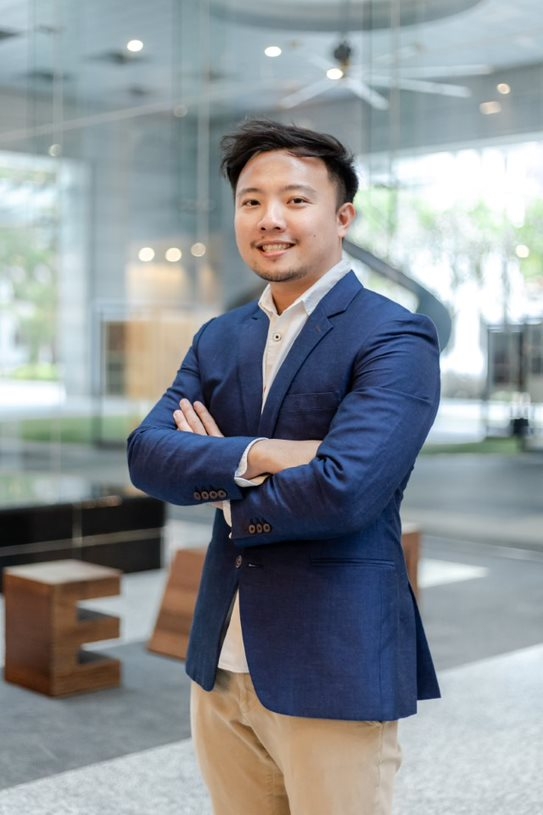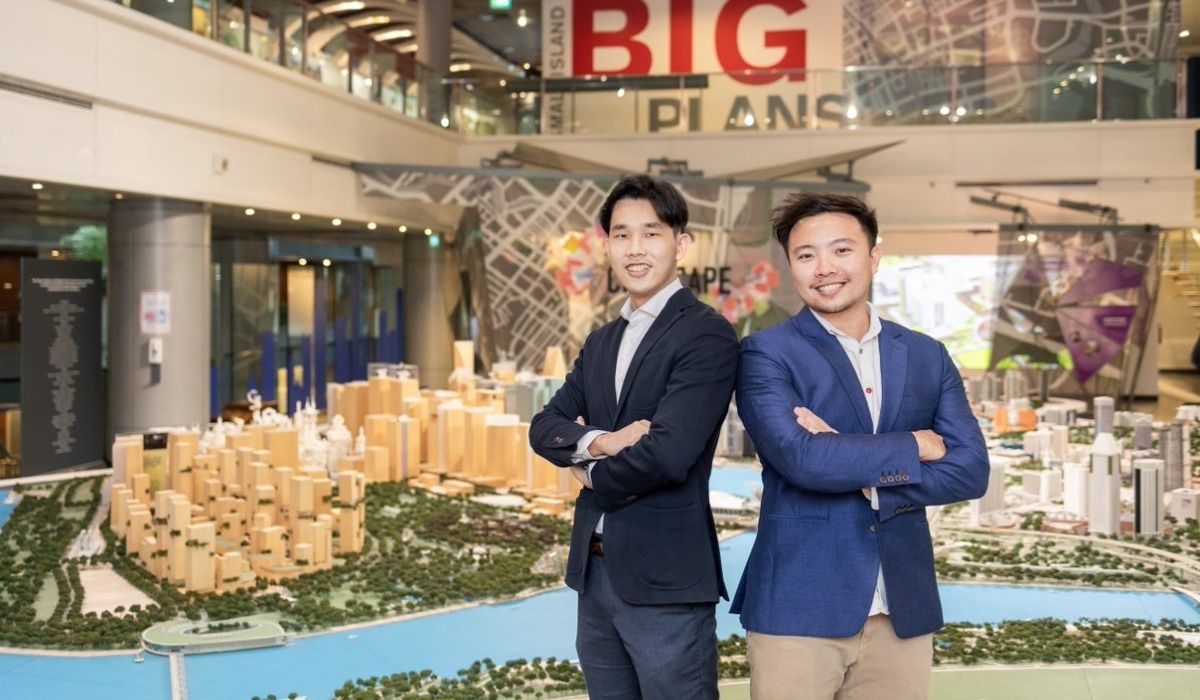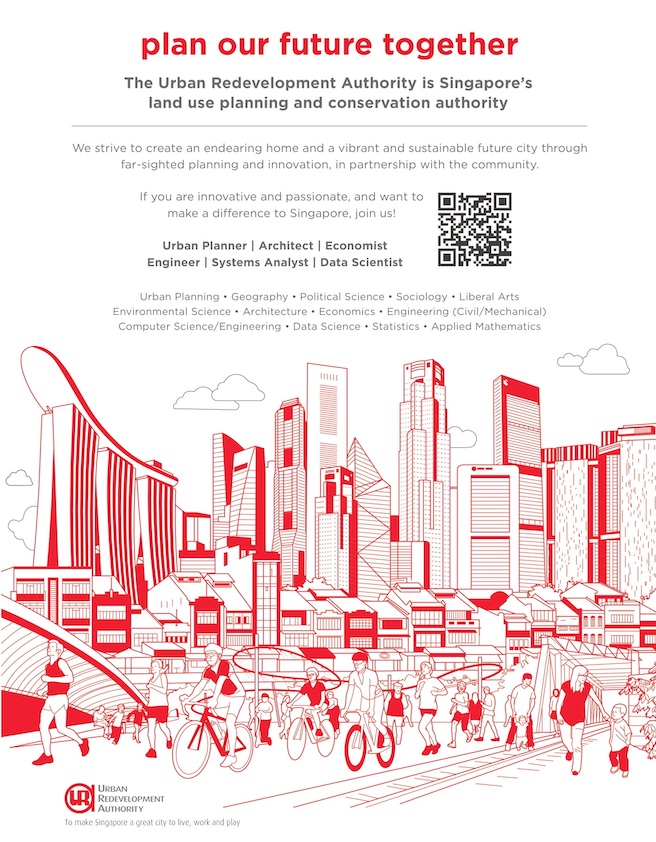Left: Ng Jia Yi is a Civil Engineer in the Underground Works Department, Development Services Group at URA. The URA Overseas Scholar has a Master of Engineering (Civil Engineering) from the Imperial College London, UK.
Right: Julian Cheng is Deputy Director (Urban Design Technology) of the Design & Planning Lab at URA. He leads a team of architects, engineers, and systems analysts to drive the use of innovative technologies to enhance the urban planning and design process. He is also a URA Overseas Scholar, with a Master of Architecture from the University of Michigan, USA.
The Urban Redevelopment Authority’s (URA) mission is to make Singapore a great city to live, work and play. Supporting this mission is a group of dedicated officers with a myriad of experiences and disciplines, who come together and play different roles in URA.
Scholars Ng Jia Yi and Julian Cheng are two of them.
Jia Yi is a civil engineer in the Underground Works Department. His job involves exploring the potential of underground space in Singapore. Julian, on the other hand, leads a team of architects, engineers, and systems analysts to enhance the urban planning and design process through the use of innovative technology.
The duo sat down with us to discuss, not their different portfolios, but their common motivation - to shape the lives and built environment for future generations in a sustainable and tangible way.

Ng Jia Yi
To start with, your interests could be explored in many different settings. So, why did you each choose the URA Scholarship, specifically?
Jia Yi: While most of my peers chose their course of study before applying for a scholarship, mine was quite the other way round! I was curious about the built environment’s influence on human experience, and URA’s work was most aligned with my passion in shaping the built environment. Personally, I wanted a career where work is tangibly reflected in the daily lives of people.
Julian: URA offered the opportunity to be involved in a wide range of projects, from master planning of large strategic sites to guiding the restoration of precious conserved buildings. Ultimately, I felt that a career in URA would be both interesting and fulfilling, knowing that your work would have a direct impact on the lives of many Singaporeans.
And how did URA and its scholarship change your overseas study experiences?
Jia Yi: As a supportive organisation, URA tagged me with a buddy who gave me advice not just academically, but also on what to look out for when settling abroad. My colleagues, whom I met while on my internship with URA, were always kind in giving me advice and resources, even beyond my internship period. Some of them even visited me when they went to London! I’m glad to have met like-minded, genuine, and supportive colleagues.
URA also encouraged me to broaden my horizon and experiences while overseas, and supported me in taking up an internship with an engineering consultancy in London. I was fortunate to be able to work on projects such as the Thames Tideway as well as the London Heathrow Airport expansion, and I definitely cherished working with colleagues of different cultures!
Julian: Like Jia Yi, I found the URA scholarship experience to be very personalised and nurturing. For example, I was connected to mentors from URA who I could tap on for guidance throughout my education. I was also provided with the opportunity to intern in a few departments in URA which allowed me to understand URA’s breadth of work better and gave some context to what I was learning in school.

Julian Cheng
So, could you each tell us about your respective positions?
Jia Yi: I’m currently a civil engineer in the Underground Works Department. There, I work with other agencies to reduce service diversions in Singapore’s underground space. I also explore possibilities in underground development, such as utilising cavern spaces and evaluating feasibility assessments and policy studies.
Julian: As the Deputy Director of Urban Design Technology at the Design & Planning Lab, I lead a team to enhance the urban planning and design process through the adoption of 3D digital technology. Our work enables planners and architects, both within URA and across other agencies, to visualise urban problems better, model and simulate solutions before making better-informed decisions. These ultimately allow us to continue to make Singapore a great city to live, work, and play while addressing increasing global challenges and complexity such as climate change.
Julian, what has been your most significant project so far at URA?
Julian: Prior to my current position, I was with the Conservation Planning Department. There, I had the opportunity to work with a team on the conservation of the Golden Mile Complex, which is a significant icon of our modern heritage. The process was extremely challenging as this was the first large-scaled, strata-titled (read: many co-owners) development to be conserved and there were many factors that we needed to consider. After an extensive study that included engaging diverse groups of stakeholders and working with various agencies, URA was able to proceed with the conservation of the building while offering a set of planning incentives to make adaptive reuse of the building more viable.
Jia Yi, is there anything you would like to get involved with in the future?
Jia Yi: Although I’m with the Underground Works Department, I’ve had the opportunity to be exposed to work from other Groups in URA, such as facilitating public engagement sessions for the Long-Term Plan Review. I’m looking forward to more cross-departmental projects, such as the preparation of Government Land Sales sites.
That certainly sounds like you’re making meaningful impact to Singapore’s landscape! What can future URA Scholars look forward to?
Jia Yi: URA’s work is dynamic and many of us will be exposed to different aspects of work. My mentors were also previously seconded to different public agencies and the private sector as well. More importantly, there are always opportunities for growth in URA given the multiple facets of work in URA!
So, if you are someone who cherishes teamwork and has a passion for city planning and the built environment, join this team of like-minded people in shaping a better future!
Julian: If you want to be part of a team that is at the forefront of the urban planning and design field with a real opportunity to shape the built-environment and lives of many people, URA is an obvious choice. There are not many organisations globally that are so deeply involved in the entire planning and built-environment lifecycle.



